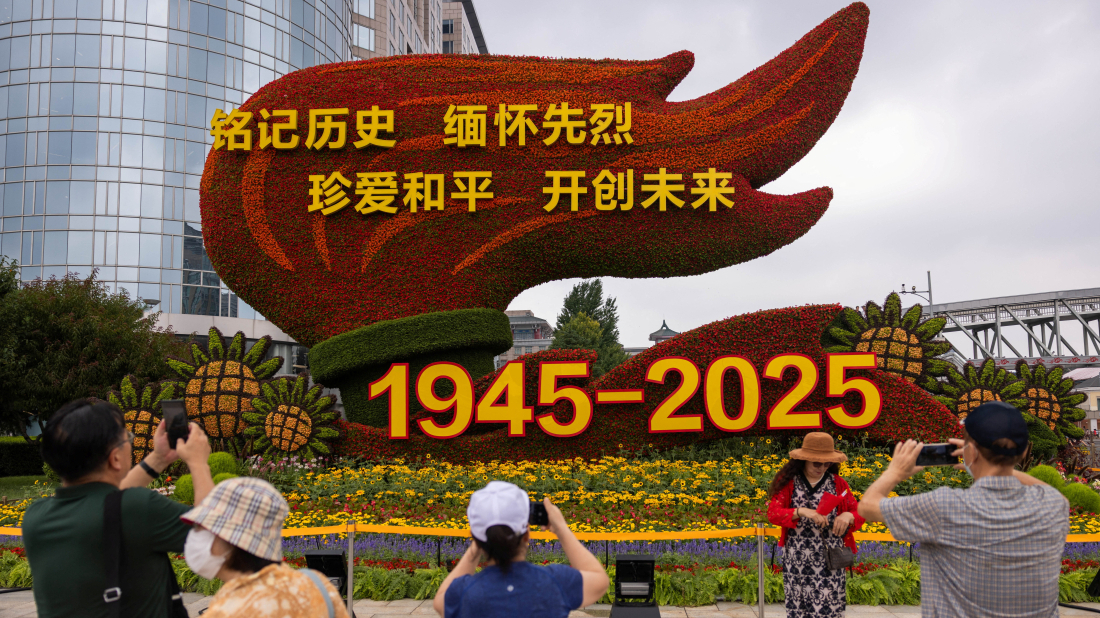AnewZ Morning Brief - 20th August, 2025
Start your day informed with AnewZ Morning Brief: here are the top news stories for the 20th of August, covering the latest developments you need to k...

China will hold a large-scale military parade in central Beijing on 3 September to mark 80 years since Japan's surrender in World War Two, showcasing new weaponry and air power amid rising regional tensions.
Hundreds of aircraft, including fighter jets and bombers, will fly over Tiananmen Square alongside ground equipment, some never seen in public before according to authorities. The parade will feature 45 military contingents and last 70 minutes. President Xi Jinping will oversee the event, joined by foreign dignitaries including Russian President Vladimir Putin.
The People's Liberation Army (PLA) is expected to unveil new hypersonic and anti-ship missiles, drone-defence systems, and early warning aircraft designed to protect China’s expanding naval presence.
"The weapons will fully demonstrate our military's robust ability to adapt to technological advancements," said Wu Zeke, deputy director of the parade.
The display comes as China's military assertiveness continues to raise concern among regional neighbours and Western powers. Observers say the parade is intended as both a celebration of historical victory and a signal of future readiness.
The last comparable event occurred in 2015, when more than 12,000 troops participated and 200 aircraft took part. That parade drew guests from Russia, Belarus and Cambodia, while many Western leaders declined to attend. Japanese Prime Minister Shinzo Abe notably stayed away.
This year, Beijing has already conducted two large-scale weekend rehearsals, involving more than 60,000 personnel. Security measures in the capital have intensified, with road closures, diverted traffic, and restrictions on commercial activity around the parade route.
The event is expected to reinforce China’s emphasis on military modernisation and national pride, while international analysts will closely watch the systems unveiled as indicators of China’s strategic priorities.
A powerful eruption at Japan’s Shinmoedake volcano sent an ash plume more than 3,000 metres high on Sunday morning, prompting safety warnings from authorities.
According to the German Research Centre for Geosciences (GFZ), a magnitude 5.7 earthquake struck the Oaxaca region of Mexico on Saturday.
Honduras has brought back mask mandates as COVID-19 cases and a new variant surge nationwide.
The UK is gearing up for Exercise Pegasus 2025, its largest pandemic readiness test since COVID-19. Running from September to November, this full-scale simulation will challenge the country's response to a fast-moving respiratory outbreak.
Kuwait says oil prices will likely stay below $72 per barrel as OPEC monitors global supply trends and U.S. policy signals. The remarks come during market uncertainty fueled by new U.S. tariffs on India and possible sanctions on Russia.
Start your day informed with AnewZ Morning Brief: here are the top news stories for the 20th of August, covering the latest developments you need to know.
The White House debuted on TikTok on 20 August with a pro-Trump video, entering the platform even as its future in the U.S. remains uncertain under a looming 17 September deadline.
A Russian drone strike on the city of Okhtyrka in Ukraine’s northeastern Sumy Oblast injured 12 people, including two children, according to local authorities.
U.S. President Donald Trump said on Tuesday he had ruled out putting U.S. troops on the ground in Ukraine, but said the United States might provide air support as part of a deal to end Russia's war in the country.
Russia offered “almost immediate” concessions during last week’s Alaska summit with former U.S. President Donald Trump, a U.S. envoy has said, signalling momentum towards a potential peace deal in Ukraine.
You can download the AnewZ application from Play Store and the App Store.

What is your opinion on this topic?
Leave the first comment